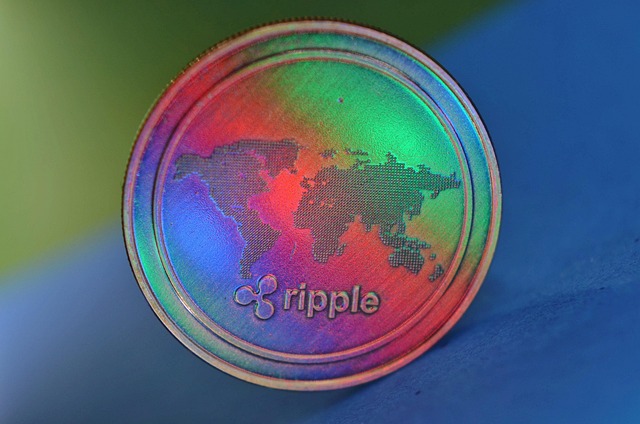XRP: Sell or Hold? An In-Depth Analysis for Informed Investment Decisions
Author: Jameson Richman Expert
Published On: 2025-09-24
Prepared by Jameson Richman and our team of experts with over a decade of experience in cryptocurrency and digital asset analysis. Learn more about us.
Deciding whether to sell or hold XRP remains one of the most nuanced and consequential questions faced by both seasoned traders and newcomers in the ever-evolving cryptocurrency landscape. Given XRP’s prominent position within the digital asset ecosystem, its future trajectory is subject to a multifaceted array of influences, including technological innovations, regulatory frameworks, macroeconomic trends, investor sentiment, and strategic adoption efforts. Its history of high volatility, compounded by ongoing legal challenges, underscores the necessity for a comprehensive, well-informed approach to investment decision-making. This detailed analysis aims to deepen your understanding of XRP’s current landscape by dissecting its technological infrastructure, legal environment, market dynamics, adoption prospects, and psychological factors that influence its price movements. Armed with this knowledge, you will be better equipped to decide whether to hold your XRP through turbulent periods or to capitalize on strategic selling opportunities.

Understanding XRP and Its Market Dynamics: A Closer Examination
XRP was developed by Ripple Labs with the overarching goal of revolutionizing cross-border payments. Its architecture aims to offer a faster, more scalable, and cost-efficient alternative to traditional banking networks such as SWIFT. Unlike Bitcoin and other proof-of-work cryptocurrencies, XRP employs the Ripple Protocol Consensus Algorithm (RPCA), a unique consensus mechanism that eliminates energy-intensive mining. Instead, XRP transactions are validated by a network of trusted validators, enabling near-instant transaction finality—typically within 3-5 seconds—and significantly lower processing fees. This technological advantage positions XRP as an attractive solution for financial institutions seeking to streamline international remittances, optimize liquidity management through on-demand liquidity (ODL), and reduce operational costs.
Market performance, however, is heavily influenced by external factors that extend beyond technological fundamentals. Strategic partnerships with major banks, payment networks, and remittance companies serve as catalysts for adoption, but regulatory clarity—or the lack thereof—remains a pivotal driver. Macro-economic conditions, such as interest rate fluctuations, currency devaluations, inflation, and geopolitical tensions, also play critical roles in shaping investor sentiment and liquidity flows. Historically, XRP’s price has exhibited sharp swings triggered by legal rulings, partnership news, macroeconomic shocks, and market speculation. Employing a balanced approach that integrates technical analysis with fundamental insights is essential for navigating this complex environment and forecasting plausible price trajectories more accurately.
Recent trends show XRP trading within a volatile range, oscillating between key support and resistance levels dictated by macroeconomic indicators like the US dollar index, inflation data, and geopolitical developments. These factors, combined with liquidity levels and market sentiment, influence whether current dips are viewed as buying opportunities or signals of further downside risk. Developing a nuanced understanding of these dynamic interactions is crucial for crafting resilient, adaptable investment strategies capable of withstanding unpredictable market shifts.
Legal and Regulatory Factors: The Pivotal Influence on XRP’s Future
Legal and regulatory developments constitute arguably the most significant factors influencing XRP’s market outlook. The ongoing lawsuit filed by the U.S. Securities and Exchange Commission (SEC) alleges that Ripple Labs conducted an unregistered securities offering by selling XRP, which the SEC classifies as a security rather than a currency. This case has introduced substantial legal uncertainty, prompting numerous U.S.-based exchanges—including Coinbase, Kraken, and others—to suspend or delist XRP either temporarily or permanently, thereby severely restricting liquidity and trading options for investors.
The legal outcome remains highly uncertain and has profound implications. Ripple contends that XRP should be regarded as a digital currency or commodity rather than a security, aligning with classifications by the Commodity Futures Trading Commission (CFTC) and other jurisdictions. Ripple warns that a negative ruling might set a precedent that could threaten the broader crypto ecosystem, potentially leading to increased regulatory crackdowns, restrictions on market access, and diminished utility of XRP in financial services.
A favorable resolution—such as a dismissal or a ruling that XRP is not a security—could pave the way for relisting on major exchanges, increased institutional participation, and renewed retail interest, potentially catalyzing a price rebound. Conversely, adverse rulings might impose long-term restrictions, reduce liquidity, and dampen adoption prospects. Beyond the U.S., global regulatory trends are also evolving. The European Union’s proposed Markets in Crypto-Assets (MiCA) regulation aims to create a comprehensive legal framework, which could either facilitate or hinder XRP’s adoption depending on compliance outcomes. Countries like Singapore, the UK, and Japan adopt more permissive or nuanced policies, offering potential pathways for XRP’s continued use and trading. Monitoring these legal and regulatory developments is critical for assessing XRP’s long-term viability and strategic positioning.
Technical Analysis and Market Trends: Navigating the Charts
Technical analysis remains an indispensable tool for traders seeking to identify near-term and medium-term opportunities. Key indicators include Moving Averages (MA)—such as the 50-day and 200-day MA—to gauge trend direction; Relative Strength Index (RSI)—to detect overbought or oversold conditions; Moving Average Convergence Divergence (MACD)—for momentum shifts; and Fibonacci retracement levels—highlighting potential reversal zones and support/resistance thresholds.
Currently, XRP exhibits consolidation within a defined trading range, with support levels around $0.35–$0.40 and resistance near $0.55–$0.60. A decisive move above resistance on high volume could signal a bullish breakout, suggesting a potential trend reversal and a good opportunity for accumulation or holding. Conversely, a breakdown below support may activate stop-loss orders, indicating a bearish phase and prompting profit-taking or cautious repositioning.
Incorporating macroeconomic data into technical analysis further enhances predictive accuracy. Factors such as the strength of the USD (especially for XRP/USD pairs), interest rate trends, inflation data, and geopolitical tensions influence liquidity and risk appetite. Combining these insights with technical setups creates a comprehensive framework for navigating XRP’s price action, allowing traders to manage risk proactively and capitalize on emerging patterns.

Adoption and Partnership Developments: Catalysts for Value Appreciation
XRP’s intrinsic value is strongly tied to its real-world adoption within the fintech and banking sectors. Ripple Labs has established numerous strategic partnerships with major financial institutions, including central banks, payment providers, and remittance firms across North America, Europe, Asia, and the Middle East. These collaborations aim to leverage XRP as a bridge currency for cross-border liquidity, enabling faster settlement times—often within seconds—and reducing operational costs associated with international transfers.
Notably, pilot programs with central banks exploring Central Bank Digital Currencies (CBDCs), alongside live implementations in remittance corridors, serve as significant catalysts for demand. Successful integration and scalability of these initiatives could translate into sustained transactional volume, increasing XRP’s utility and value. However, delays in deployment, regulatory restrictions, or technical failures could temper expectations and impact market sentiment negatively.
Remaining vigilant with Ripple’s official announcements, industry conferences, and regulatory updates provides insights into the potential for adoption-driven growth. The strength of these partnerships and their execution will largely influence XRP’s long-term trajectory and perceived value in the global financial infrastructure.
Market Sentiment and Investor Psychology: The Human Element
Investor sentiment often drives XRP’s price volatility, sometimes even more than fundamental or technical signals. During bullish phases, positive news such as favorable legal rulings, new partnership announcements, or bullish technical patterns can trigger FOMO (Fear of Missing Out), leading to rapid price escalations. Conversely, FUD (Fear, Uncertainty, Doubt)—stemming from regulatory crackdowns, macroeconomic uncertainties, or broader market downturns—can induce panic selling, resulting in sharp declines.
Analyzing social media platforms, community forums like Reddit and Telegram, and mainstream news outlets offers valuable insights into prevailing investor psychology. An increase in optimistic sentiment, accompanied by heightened social media activity, often precedes upward price movements. Conversely, widespread fear or skepticism can signal an impending correction. Behavioral biases such as herd mentality, overconfidence, and emotional reactions amplify these movements, making sentiment analysis a critical component of strategic decision-making.
Long-term investors benefit from cultivating patience and conviction, especially during dips, if they believe in Ripple’s strategic vision and ecosystem development. Establishing predefined entry and exit points based on technical and fundamental analysis helps mitigate impulsive reactions and fosters disciplined investing. Recognizing psychological biases and emotional reactions is vital for maintaining composure and maximizing long-term gains in a volatile environment.
Where and How to Safely Buy XRP: Resources and Best Practices
If your analysis suggests a favorable entry point, selecting a reputable, secure, and regulated exchange is essential. Leading platforms such as Binance, MEXC, Bitget, and Bybit are known for their high liquidity, advanced security protocols, and user-centric interfaces. When choosing an exchange, consider:
- Regulatory compliance in your jurisdiction, ensuring legal safety and platform legitimacy.
- Security features such as two-factor authentication (2FA), withdrawal whitelists, and cold storage options to protect your assets.
- Fee structures, deposit/withdrawal limits, and available trading pairs to optimize costs and trading flexibility.
Recommended resources for acquiring XRP include:
- Register on Binance — Offers extensive liquidity, advanced trading tools, and reliable customer support.
- Join MEXC — Competitive fees, diverse crypto offerings, and robust security features.
- Sign up on Bitget — Features include derivatives and margin trading, suitable for more aggressive traders seeking leverage.
- Register on Bybit — Ideal for traders with experience seeking leverage, derivatives, and futures trading.
To protect your investment, always enable security measures such as 2FA, conduct thorough KYC verification, and consider storing your XRP in hardware wallets or cold storage solutions. Regularly update your security practices, stay vigilant against phishing, hacking, and scams, and educate yourself on emerging threats. Proper security protocols are vital in safeguarding your assets in an inherently volatile and sometimes risky environment.

Conclusion: Strategic Decision—Sell or Hold XRP?
Ultimately, the decision to sell or hold XRP hinges on a combination of ongoing legal developments, technical market signals, macroeconomic factors, adoption progress, and your individual financial goals and risk appetite. If you maintain confidence that Ripple’s ecosystem and strategic initiatives will yield positive outcomes—such as favorable regulatory rulings, increased institutional adoption, or technological advancements—holding or even accruing more XRP may be advantageous.
Conversely, if regulatory risks, legal uncertainties, or technical concerns dominate your risk assessment, reducing exposure through a calculated sale can help preserve capital and minimize potential losses. Diversification across assets and disciplined risk management are critical to navigating the inherent volatility of cryptocurrencies.
The key to successful investing in XRP lies in maintaining an informed, disciplined, and adaptable approach. Leveraging a blend of thorough fundamental analysis, technical insights, and psychological awareness will enable you to navigate the complex and dynamic landscape effectively, helping to capitalize on opportunities while safeguarding against unforeseen downturns and shocks.